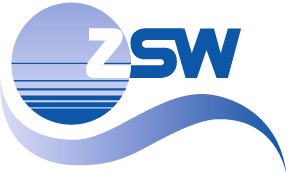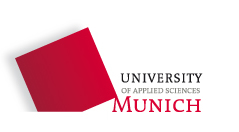“Stagnation is Regression”
We Are Making Dynamic Progress!
“We are also a strong partner in research. Our goal: to move the state of the art a little further every day. In this way, we can ensure that we always take the latest research results into account for your questions and can offer the most efficient and effective answers.”
Matthias Kretschmer, Dr.Eng., Contact for Research

OTELLO
OTELLO – Operational Technical Strategies for Economic Load and Lifetime Optimization for Wind Energy Assets
Offshore wind farms with zero-cent subsidy bids and post-EEG wind energy plants must generate their revenues solely from the electricity market. This requires forward-looking operational strategies that account for market prices as well as the expected wear and tear on the installations the following day. Consequently, MesH Engineering GmbH has joined the BMWK-funded project OTELLO, collaborating with the Fraunhofer IEE and anemos Gesellschaft für Umweltmeteorologie to develop new tools for optimizing wind farm schedules. These experts are integrating, among other things, short-term forecasts of turbulence intensity – the central factor for the wear and tear of wind energy installations.
Project partners:



Project number: 03EE2060C
Project duration: 01.01.2024 – 31.12.2026
e-TWINS
e-TWINS – Holistic digital twins for the energy system
The Subproject "Development of software framework and drive train digital twins" of MesH attempts to attain two different goals:
(1) Research and Development of a holistic generic software plattform and its interfaces (hard and software) for the implementation and generation of digital twins and industry 4.0 technologies for the energy system.
(2) Development of digital twins for wind turbine drive trains applying UQ methods, AI and machine learning.
Both research results will be intensively tested and validates as standalone systems, interconnected and coupled to the results of the other partners of the joint project. Furthermore the application of the developed system will be demonstrated by the use of reference scenarious.
Final Report: Open PDF
Project partners:




Project number: 03EI6020D
Project duration: 01.01.2020 – 30.06.2023
GridLoads
GridLoads: Methods and tools for grid-based control of wind turbine generators
Target
For the conversion of the German energy supply and the large-scale expansion of wind energy, wind turbines must increasingly contribute to grid support and grid stabilisation. In particular, this requires a highly dynamic reaction of the active and reactive power to disturbances in the grid, such as short circuits, partial grid splits, power plant failures, etc. In special cases, a short-term motor operation of the plants can also be useful. The generator controls required for this are currently the subject of extensive research activities. However, one aspect of these controls that has not yet been comprehensively investigated from the point of view of the individual plants is that dynamic voltage and frequency changes in the grid have a direct effect on the active power of the plants and thus on the excitation of drive train vibrations and the associated mechanical loads.
Grid Support
The requirements for fast grid support in the event of disturbances in the interconnected grid will make new demands on the generator control of wind turbines in the future. Especially for fast frequency support, high gradients in the active power must be realized. These changes in active power result in corresponding changes in the torque at the generator and can thus stimulate the structure of the wind turbine to oscillate and cause increased mechanical loads. This affects in particular the drive train, i.e. the coupled system consisting of rotor blades, shafts, gearbox and generator, but also the tower of the wind turbine. Through generator controls, which react with high dynamics to changes in magnitude and phase of the local voltage pointer, the dynamics of the interconnected grid are effectively coupled with the structural dynamics of the WTG. Thus coupled oscillation modes can occur, which couple the behaviour of several individual plants with each other as well as with other generators in the network.
Therefore, a multidisciplinary analysis environment is to be created to investigate the feedback effect and the influences of the new grid-supporting generator controls on the structural dynamics, stability and loads of a wind turbine.
Multibody Systems
Multibody models of structural dynamics are coupled with models for the description of generator dynamics and the electrical network. In particular, the generator system must be mapped with high accuracy as a coupling element between the dynamic network processes and the structural dynamics of the wind turbines. Influences of this type of control system on the structural dynamics will cause changed requirements on the design of the drive train systems, which will be investigated in this project.
The analysis of vibration phenomena on the drive train of a wind turbine is carried out according to the state of the art with correspondingly resolved multi-body models which describe the elastic structural components and the coupling with the aerodynamic forces. Depending on the problem, such models can describe low-frequency oscillations in the range of 0.1 Hz up to problems of sound propagation at several 100 Hz.
Stability
Special attention will be paid to the possibility of instabilities that cause structural failure. Wind turbines with a modern control system can experience a reduction of the system damping due to the interaction between the aerodynamic forces, elastic forces, inertial forces and the forces induced by the control system, which in the worst case leads to instability or strong vibration. In order to predict the occurrence of such instabilities, the interactions and interactions between structure, aerodynamics and control system must be considered in the overall system model. For the stability analysis of a wind turbine with grid-supporting control system, a modeling strategy must first be defined and a simulation environment implemented. This simulation environment is used for the construction of the overall system model. MesH has already developed a software tool for the aeroelastic stability analysis of a wind turbine. This is based on the modeling of the wind turbine as a multi-body system. For the stability analysis in gridloads the existing stability analysis tool shall be further developed in order to enable a sufficiently accurate prediction of the aero-servo-(electro)-elastic instability. With the application of the newly developed tool, a possibility is created to determine the distance to the stability limit and thus to enable the design of the control system to influence stability.
A further aspect of the feedback effect of the mains supporting control system consists in influencing the component loads of the WTG (e.g. rotor, gearbox, etc.). These loads are dimensioning for the design of the structure. Time simulations for the overall system model are performed and evaluated to analyze the loads. For these time simulations representative load cases are selected and compared with the loads from the simulation without network supporting control systems.
Acoustic emissions
In addition to the mechanical loads, possible mechanisms for the excitation of increased noise emissions resulting from the generator system and the coupling with the grid should also be considered. Example effects are asymmetric network states and asymmetric magnetic fields caused by elastic displacements of the generator rotor.
After identifying the feedback effect of the grid-supporting control system on loads, the second step is to investigate the possibilities for actively influencing the vibration behaviour by controlling the generator system. IWES plans an extension of the known grid-supporting control procedures by measures for the reduction of powertrain loads. In order to reduce the system costs, a joint optimization of the structural and control parameters makes sense. In this subproject, a numerical sensitivity analysis will be used to establish this parameter space. The described investigations are to be carried out in the simulation in order to make the couplings between structural dynamics and network transparent. On the other hand, the investigated controls for commercial converter systems are not yet available. Experimental testing on generator or nacelle test benches is not expedient, since the structural dynamics of the wind turbines of interest cannot be realistically simulated due to the lack of rotor blades and the bandwidth restrictions in the control system.
Project partner:


Project number: 0324192B
Project duration: 01.09.2017 – 29.02.2020
TremAc
TremAc: Objective criteria for vibration and sound emissions of onshore wind turbines
The now completed joint project TremAc, which was led by the Institute for Soil Mechanics and Rock Mechanics (IBF) at the Karlsruhe Institute of Technology (KIT), served to identify the main parameters and threshold values for an objective evaluation of the noise and vibration load of wind turbines as a function of the plant data, the construction, the topography and the distance to the immission site.
In this project we at MesH Engineering have dealt intensively with the emission of tonal noises from wind turbines with gears. In this project we were able to develop a simulation process which allows us to determine the tonal noise emissions of wind turbines using only numerical methods. This type of noise emission from gear units originates from the gearing of the individual gear stages. The excitation at the gears is represented by a special force element in our very detailed multi-body model. The multi-body model also represents the entire transfer path of vibrations within the wind turbine. The low-frequency oscillations, which are particularly in focus in this project, are then emitted into the environment as airborne noise, especially at the rotor blades and the tower. The transition from the vibration in the structure to the surrounding air cannot be modelled in a multi-body system. Therefore, a dedicated finite element model was developed for this purpose in order to also consider this effect numerically.
The possibility to treat tonal vibroacoustics numerically is a very important but not yet sufficient step in the improvement of modern wind turbines. Therefore, MesH Engineering also investigated different possibilities to get the wind turbines quieter in the TremAc project. One possibility investigated is to change the microgeometry of the gearing in such a way that the transmission error at the gearing and thus the excitations of the system become smaller. Another possibility is the installation of hydromounts at the connection points between the rotating and non-rotating components of the wind turbines. The damping properties of hydromounts make their numerical treatment in multi-body systems very complex. In the TremAc project, however, our experts have succeeded in finding an efficient way of modelling and quantifying the effect on the reduction of tonal noise emissions. Both possibilities for influencing tonal noise emissions showed a promising result that will certainly influence the development of future generations of wind turbines. In this way, our experts are helping to ensure that we can sleep even better as residents near wind farms in the future.
You can find out more about the project at https://www.windfors.de/en/projects/tremac/
Project partners:






Project number: 0325839
Project duration: 01.02.2016 – 31.07.2019



